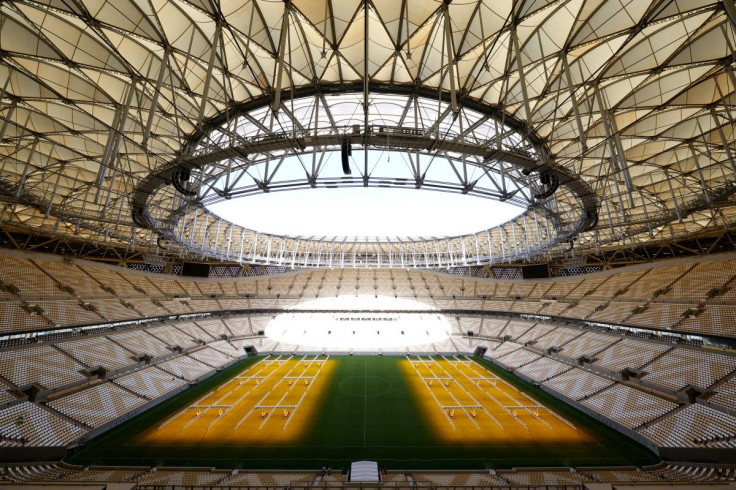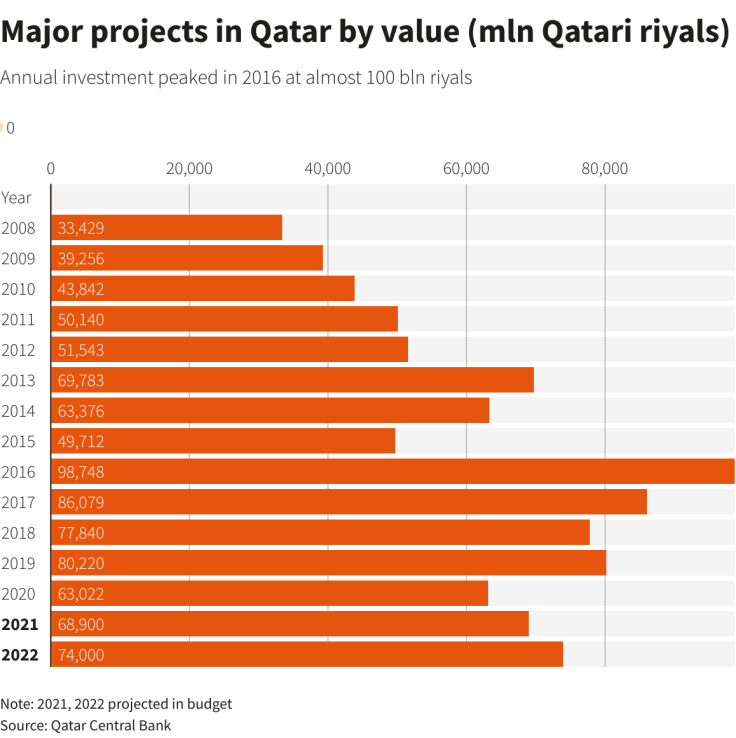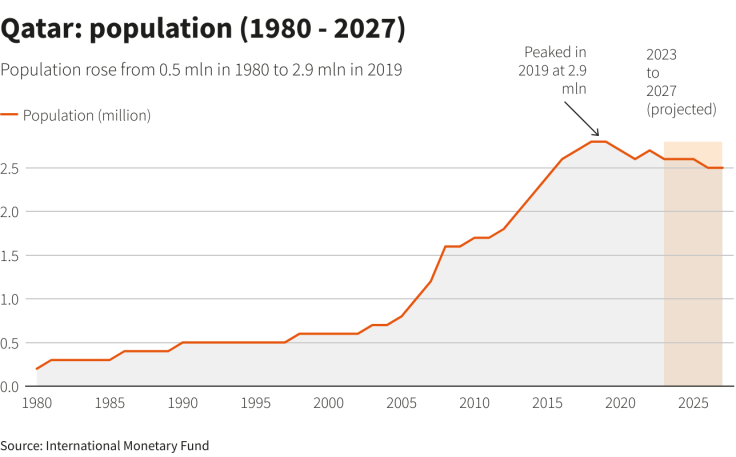Analysis-Qatar Scores As World Cup Host But May Not Net Long-term Goals

Tucked behind Doha's $300-million Lusail Boulevard, where construction workers are toiling to transform desert into a Champs-Elysees-inspired commercial thoroughfare before the 2022 soccer World Cup, sits a sole convenience store.
With the main stadium, four skyscrapers and apartments designed for some 200,000 people all in Lusail, its manager Younes waits somewhat anxiously behind his till, anticipating a rush of trade when the event finally kicks off in November.
Gas-rich Qatar, in an attempt to emulate the dramatic transformation of Gulf rivals Dubai and Abu Dhabi, has spent at least $229 billion on infrastructure in the 11 years since winning the bid to host the World Cup.
Much of the work was planned independently as Qatar pushes to diversify its non-energy economy, with ambitions to become a regional business hub and to triple tourist numbers to 6 million a year by 2030, a government official told Reuters.
But analysts and academics are not convinced that the big spending from its gas revenues will mean Qatar can fulfil its economic dream once the 28-day tournament ends.
Younes, who declined to give his surname, also has doubts.
"After the World Cup, what will happen? Will business go down or up? We don't know," he said.
Qatar faces stiff competition from regional rivals Saudi Arabia and the United Arab Emirates (UAE), which offer larger and more established markets and greater variety for tourists.
But that has not deterred the tiny, cash-rich state as it spends its way onto the global stage. At the peak of its building boom in 2016, Qatar spent 18% of GDP on infrastructure, dwarfing the sums spent on staging previous World Cups.
Graphic: Major projects in Qatar by value-

South Africa shelled out $3.3 billion on infrastructure to prepare for the event in 2010, while Brazil made $11.6 billion worth of infrastructure investments to host it in 2014, even though half of the projects promised were never built.
That is not the case on the Lusail seafront, where the 600-shop Place Vend?me opened last month. The mall attempts to re-imagine Paris, with a canal for shoppers who arrive by boat, alfresco dining with a view of dancing fountains and a luxury wing with giant Christian Dior and Louis Vuitton outlets.
Already home to the region's largest U.S. military base and the Arab region's most influential TV channel, Qatar has not just splurged on soccer stadiums but also expressways, a metro network, a deep-water port and an expanded airport.
But some fear much of the new build may sit idle after the tournament, with an expected exodus of expatriates, a possible drop-off in demand and a slowdown in Qatar's non-energy economy.
"A lot of thought and effort is going to be needed to re-purpose a lot of that infrastructure to make it usable, to make it fit for purpose beyond the World Cup," said Robert Mogielnicki, a senior resident scholar at the Arab Gulf States Institute in Washington.
SPRINGBOARD
Doha sees the first soccer World Cup to be held in the Middle East as a "marketing springboard" for would-be visitors, the government official told Reuters.
In South Africa, officials have said the 2010 World Cup kicked off a tourism boom and visitor numbers rose steadily to a pre-pandemic high of 10.2 million in 2019, when tourism contributed close to 10% of GDP.
Government-backed Qatari companies and private investors have ploughed billions into commercial ventures such as shopping malls, hotels, housing estates and theme parks.
"It's the build-it-and-they-will-come philosophy of Gulf development," said Karen Young, a senior fellow at the Middle East Institute in Washington.
Tunnels, overpasses and elevated expressways have replaced Qatar's clogged dual-carriageways and British-style roundabouts, with verges now planted with date palms, flowering moringa trees, desert grasses and bougainvillea.
"The state is sitting on all this revenue, and so people don't get angry if sometimes there's a bit of waste and things don't work out," Young added.
So far, the state-sponsored construction boom has driven Qatar's non-energy economy, with the sector comprising around 12% of GDP, according to the Qatari Planning and Statistics Authority's Qatar Economic Outlook for 2021-2023.
Construction also employs almost half Qatar's labour force, which helped boost the population by around 67% since 2011.
However, as the dominance of construction comes to an end, the non-energy economy is set to slow, despite a push for diversification aimed at building self-sufficiency.
Real estate agents and analysts say current demand for housing is hot and expected to heat up even more in the lead up to the World Cup because many of the new apartments and villas have been set aside to accommodate fans, in at least 64,000 rooms across the country.
But there are fears that empty units will flood the market when they are released after the tournament.
BACK TO GAS
As one of the world's biggest liquefied natural gas (LNG) producers, Qatar has become one of the wealthiest nations per capita with a population of around 2.8 million, of which 85% are expatriates.
But in the years after the tournament, Qatar's population is expected to decline by about 1.2% year-on-year and shrink to 2.5 million by 2027, the International Monetary Fund forecasts.
Graphic: Qatar: population (1980 - 2027)-

Many South Asian construction workers, whose treatment and pay have been in the spotlight in the World Cup build-up, are also expected to leave as the building boom tails off.
Alexis Antoniades, an economics professor at Georgetown University's campus in Qatar says it also stands to lose highly paid engineers, designers, supervisors and other white-collar professionals working on projects now nearing their end.
For Lusail store manager Younes, that spells trouble.
"Maybe these will all be empty buildings after the World Cup. We don't know," he said, adding: "You see all these flats? There's too much accommodation here".
While the IMF projects Qatar's economy will grow by 3.4% this year, thanks to a boost from World Cup-linked activity, its growth is forecast to slow to 1.7% in 2024.
Even if investment in the non-energy economy does not deliver for Qatar, however, gas is once again set to keep it pumping. Russia's invasion of Ukraine has exacerbated a global energy crisis, boosting demand for its LNG.
The IMF is forecasting Qatari growth to rise to 3.8% in 2027, when new LNG production comes online.
But Qatar's work is far from over, said Antoniades.
"We expected the economy to slow down ... But now, it is Qatar's time to open-up to the world, to attract talent, attract companies, attract foreign direct investment and attract tourists," he said.
© Copyright Thomson Reuters 2024. All rights reserved.



















